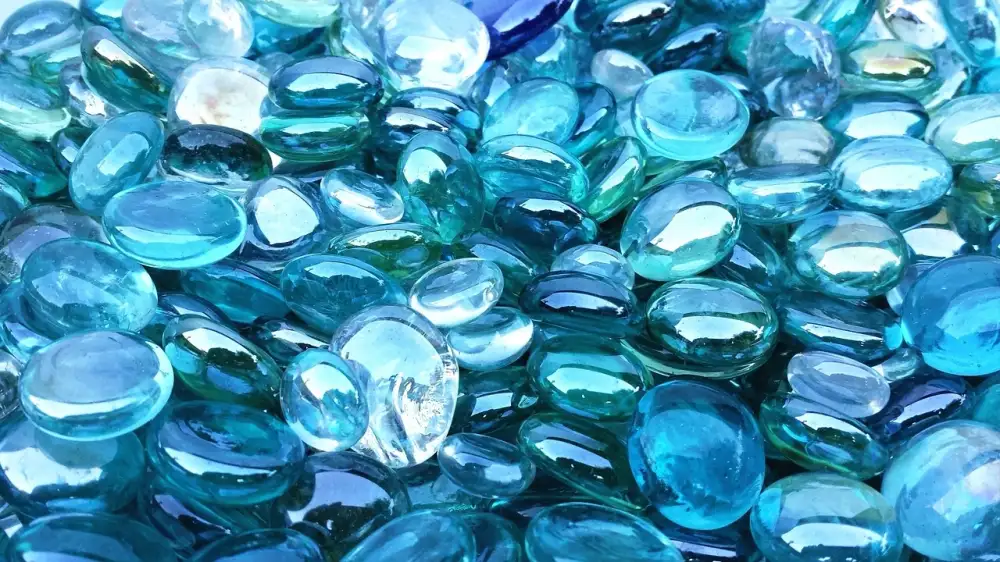Crystal Clear Ice: Master the Art of Making Clear Ice at Home

- Importance of Clear Ice in Food Presentation
- Step-by-Step Guide to Making Clear Ice
- Boiling Water for Clear Ice
- Cooling the Boiled Water
- Freezing the Water in a Specialized Container
- Removing Air Bubbles from the Ice
- Allowing the Ice to Freeze Completely
- Tips for Achieving Crystal Clear Ice
- Using Distilled Water
- Using Filtered Water
- Avoiding Tap Water
- Using Insulated Containers
- Controlling the Freezing Process
- Troubleshooting Common Issues with Clear Ice
- Cloudy Ice
- Cracked Ice
- Uneven Freezing
- Trapped Impurities in the Ice
Clear ice is a culinary phenomenon that has taken the food and beverage industry by storm. It is not just a regular ice cube; it is a work of art that adds elegance and sophistication to any drink or dish. The process of making clear ice involves removing impurities and air bubbles from the water, resulting in a crystal-clear appearance.
While clear ice may seem like something only professionals can achieve, it is actually quite simple to make at home with the right techniques and tools. In this article, we will guide you through the step-by-step process of creating clear ice, as well as provide tips for achieving the best results. So let's dive in and master the art of making clear ice!
Importance of Clear Ice in Food Presentation
Clear ice is not just a fancy trend in the culinary world; it plays a crucial role in food presentation. When serving drinks or creating visually stunning dishes, clear ice enhances the overall aesthetic appeal. Its transparent nature allows the colors and textures of ingredients to shine through, making the dish more visually appealing. Whether it's a perfectly clear ice cube in a cocktail or a crystal-clear block of ice used for carving, clear ice adds sophistication and elegance to any culinary creation. It elevates the dining experience by showcasing the attention to detail and craftsmanship of the chef. So, if you want to take your food presentation to the next level, mastering the art of making clear ice is essential.
Step-by-Step Guide to Making Clear Ice
1. Boil water: Start by boiling a pot of water. This helps remove impurities and air bubbles that can make the ice cloudy.
2. Cool the boiled water: Allow the boiled water to cool completely before moving on to the next step. This ensures that the ice freezes evenly and without any cracks.
3. Freeze in a specialized container: Pour the cooled water into a specialized clear ice container. These containers are designed to freeze the water slowly, allowing impurities to settle at the bottom.
4. Remove air bubbles: Once the water is in the container, gently tap it on a hard surface to release any remaining air bubbles trapped inside.
5. Allow complete freezing: Place the container in your freezer and let it freeze completely. This usually takes around 24 hours, so be patient!
By following these steps, you'll be able to create beautiful crystal clear ice that will elevate your food presentation to a whole new level!
Boiling Water for Clear Ice
Boiling water is the first step in creating crystal clear ice at home. By boiling the water, impurities and dissolved gases are removed, resulting in a cleaner ice formation. To boil the water, simply bring a pot of water to a rolling boil on the stove. It is recommended to use distilled or filtered water for best results. Boil the water for about 5 minutes to ensure that any impurities are eliminated. Once boiled, let the water cool down before proceeding to the next step.
Cooling the Boiled Water
After boiling the water, the next step in making clear ice is to cool it down. This process is crucial as it helps to eliminate impurities and air bubbles that can affect the clarity of the ice.
To cool the boiled water, you will need to transfer it into a clean container and let it sit at room temperature for about 30 minutes. This allows any remaining impurities or gases to rise to the surface and escape.
During this cooling process, it is important not to disturb the water or agitate it in any way. Avoid stirring or shaking the container as this can reintroduce air bubbles into the water.
After 30 minutes, you should notice that a thin layer of sediment has settled at the bottom of the container. Carefully pour the water into another clean container, leaving behind any sediment that may have accumulated.
By cooling the boiled water properly, you are taking an important step towards achieving crystal clear ice. It sets a solid foundation for the freezing process and ensures that any impurities are removed before freezing.
Freezing the Water in a Specialized Container
After boiling and cooling the water, the next step in making clear ice is to freeze it in a specialized container. This container is designed to allow the ice to freeze slowly and evenly, which helps in achieving crystal clear results.
There are various options available for specialized containers, such as silicone molds or insulated coolers. Silicone molds are a popular choice as they come in different shapes and sizes, allowing you to create unique ice cubes or even large blocks of clear ice.
When using a silicone mold, make sure to fill it with the cooled boiled water, leaving some space at the top for expansion during freezing. Place the mold on a flat surface in your freezer and ensure it is stable. This will prevent any accidental spills or uneven freezing.
If you prefer using an insulated cooler, fill it with the cooled boiled water and place it in the freezer with the lid off. The insulation helps slow down the freezing process and allows any impurities or air bubbles to settle at the bottom of the container.
Regardless of the container you choose, it's important to handle it with care during freezing. Avoid moving or shaking it as this can introduce air bubbles into the water and affect clarity.
Once you have placed the container in the freezer, be patient and allow enough time for the water to freeze completely. This usually takes several hours or overnight depending on your freezer's temperature.
Remember that patience is key when making clear ice. Rushing through this step may result in cloudy or cracked ice. So take your time and let nature work its magic by slowly freezing your water into beautiful crystal clear ice cubes or blocks.
Removing Air Bubbles from the Ice
To remove air bubbles from the ice, gently tap the container on a hard surface. This will help dislodge any trapped air pockets within the ice. You can also try using a toothpick or skewer to carefully poke holes in the ice, allowing any remaining air bubbles to escape. Be cautious not to crack or break the ice while doing this. Removing air bubbles is crucial for achieving crystal clear ice, as they can cause cloudiness and affect the overall appearance of your final product.
Allowing the Ice to Freeze Completely
Once you have removed any air bubbles from the water, it is crucial to allow the ice to freeze completely. This process typically takes around 24 to 48 hours, depending on the size of your container and the temperature of your freezer. It is important not to rush this step, as premature removal of the ice can result in cloudy or cracked ice. Patience is key when it comes to achieving crystal clear ice. Once the ice has frozen completely, you can carefully remove it from the container and marvel at its clarity.
Tips for Achieving Crystal Clear Ice
1. Using Distilled Water: Distilled water has fewer impurities, resulting in clearer ice. It can be easily found in grocery stores.
2. Using Filtered Water: If distilled water is not available, using filtered water can also help reduce impurities and improve clarity.
3. Avoiding Tap Water: Tap water often contains minerals and chemicals that can cause cloudiness in ice. It's best to avoid using tap water for making clear ice.
4. Using Insulated Containers: Insulated containers slow down the freezing process, allowing impurities to settle at the bottom and producing clearer ice on top.
5. Controlling the Freezing Process: Slow and controlled freezing helps prevent air bubbles from forming in the ice, resulting in a crystal-clear appearance. Lowering the temperature gradually can achieve this.
Remember, following these tips will greatly enhance your chances of achieving perfect crystal clear ice for your culinary creations!
Using Distilled Water
One of the key factors in achieving crystal clear ice is using distilled water. Distilled water is free from impurities and minerals, which can cause cloudiness in the ice. By using distilled water, you eliminate the risk of any unwanted particles or minerals affecting the clarity of your ice. You can easily find distilled water at most grocery stores or even make it at home using a distillation process. Remember, using distilled water is essential for obtaining that perfect, clear ice for your culinary creations.
Using Filtered Water
Another important tip for achieving crystal clear ice is to use filtered water. While distilled water is the best option, using filtered water can also help remove impurities and minerals that can cause cloudiness in the ice.
Filtered water can be easily obtained by using a water filter pitcher or a faucet-mounted filter. This will ensure that any chlorine, sediment, or other contaminants are removed from the water before freezing.
By using filtered water, you are taking an extra step to ensure that your ice turns out clear and visually appealing. It may seem like a small detail, but it can make a big difference in the overall presentation of your dishes and drinks.
Avoiding Tap Water
To achieve crystal clear ice, it is important to avoid using tap water. Tap water often contains impurities such as minerals and chemicals that can affect the clarity of the ice. These impurities can create cloudy or hazy ice cubes. Instead, opt for using distilled water or filtered water. Distilled water has been purified through a process of boiling and condensation, removing any impurities. Filtered water, on the other hand, passes through a filtration system that removes particles and contaminants. By using these alternatives to tap water, you can ensure that your ice cubes are free from any unwanted substances and achieve the desired clarity in your presentation.
Using Insulated Containers
One of the key factors in achieving crystal clear ice is using insulated containers during the freezing process. Insulated containers help to slow down the freezing process, allowing impurities and air bubbles to settle at the bottom or sides of the container.
When choosing an insulated container, opt for one that is made of a material that provides good insulation, such as double-walled stainless steel or high-quality plastic. Avoid containers with thin walls or those that are not well-insulated, as they may cause uneven freezing and result in cloudy ice.
Before pouring the boiled water into the insulated container, make sure it is clean and free from any residue or contaminants. This will help ensure that your ice remains clear and free from impurities.
Additionally, consider using a container with a lid or cover. This helps to prevent any unwanted particles from entering the water during the freezing process. It also helps to maintain a consistent temperature inside the container, further improving the clarity of your ice.
By using insulated containers, you can control the freezing process more effectively and increase your chances of producing crystal clear ice for your culinary creations.
Controlling the Freezing Process
Controlling the freezing process is crucial in achieving crystal clear ice. One key factor is the temperature at which the water freezes. It is recommended to set your freezer at its coldest setting, usually around -18°C (-0.4°F). This ensures a slow and even freezing process, allowing impurities to settle at the bottom of the container.
Another important aspect is the duration of freezing. The longer the water takes to freeze, the clearer the ice will be. Aim for a freezing time of at least 24 hours, but avoid leaving it for too long as it may result in cracking.
To further control the freezing process, minimize any movement or disturbance around the ice during freezing. Keep your freezer door closed as much as possible and avoid stacking items on top of or around the container.
By carefully controlling these factors, you can enhance your chances of achieving flawless, crystal clear ice that will elevate your food presentation to a whole new level.
Troubleshooting Common Issues with Clear Ice
1. Cloudy Ice: Cloudiness in ice can be caused by impurities in the water. To avoid this, use distilled or filtered water and boil it before freezing. Also, make sure to remove any air bubbles from the water before freezing.
2. Cracked Ice: If your ice is cracking during the freezing process, it could be due to rapid temperature changes. Allow the boiled water to cool completely before freezing and avoid placing the container in direct contact with a cold surface.
3. Uneven Freezing: Uneven freezing can result in layers of cloudy ice. To prevent this, ensure that the container is placed in a well-insulated area of your freezer where the temperature remains consistent throughout.
4. Trapped Impurities in the Ice: If you notice impurities trapped within your clear ice, it may be due to contaminants in the water or not removing air bubbles properly. Use distilled or filtered water and carefully remove any air bubbles by gently tapping the container on a hard surface before freezing.
By troubleshooting these common issues, you can achieve perfect crystal clear ice every time and elevate your food presentation to a whole new level.
Cloudy Ice
One of the most common issues when making clear ice is ending up with cloudy ice. Cloudiness occurs due to the presence of impurities in the water, such as minerals and gases. These impurities can create tiny air bubbles that get trapped in the ice, resulting in a cloudy appearance.
To avoid cloudy ice, it is crucial to start with clean water. Using distilled water or filtered water can help eliminate impurities and produce clearer ice. Tap water should be avoided as it often contains minerals and chemicals that can contribute to cloudiness.
Another factor to consider is the freezing process. Slow freezing allows more time for impurities to settle at the bottom of the container, resulting in clearer ice. Rapid freezing, on the other hand, traps more air bubbles and leads to cloudiness.
To minimize cloudiness, it is recommended to use insulated containers that slow down the freezing process. This helps prevent rapid formation of air bubbles and allows any impurities to settle before freezing completely.
By following these tips and techniques, you can overcome the challenge of cloudy ice and master the art of making crystal clear ice at home.
Cracked Ice
One common issue that can occur when making clear ice is the formation of cracks. These cracks can be frustrating as they not only affect the appearance of the ice but also its structural integrity.
There are a few reasons why ice may crack during the freezing process. One possibility is that the water used to make the ice contains impurities or minerals that cause it to freeze unevenly, leading to cracks. Another reason could be that the freezing process is too rapid, causing stress on the ice and resulting in cracks.
To prevent cracked ice, it's essential to use distilled or filtered water, which reduces the presence of impurities. Additionally, allowing the boiled water to cool completely before freezing it can help minimize cracking. It's also crucial to control the freezing process by using insulated containers and ensuring a slow and steady freeze.
If you still encounter issues with cracked ice, try adjusting your freezer temperature slightly higher or lower to find the optimal setting for clear and crack-free ice. Remember, practice makes perfect, so don't get discouraged if you experience some cracking initially. With time and experimentation, you'll soon master the art of making crystal clear ice without any cracks.
Uneven Freezing
Uneven freezing is a common issue when making clear ice at home. It occurs when the ice freezes at different rates, resulting in an uneven appearance. To avoid this problem, it is important to ensure that the container used for freezing the water is level and stable. Any tilting or movement during the freezing process can lead to uneven freezing. Additionally, make sure that the freezer temperature is set correctly and consistent throughout the freezing process. By taking these precautions, you can achieve perfectly clear and evenly frozen ice for your culinary creations.
Trapped Impurities in the Ice
One common issue that can arise when making clear ice is the presence of trapped impurities. These impurities can include minerals, particles, or even air bubbles that become trapped within the ice as it freezes. This can result in a cloudy appearance and affect the overall quality of the ice.
To avoid this problem, it is important to use filtered or distilled water when making clear ice. Tap water often contains impurities that can contribute to cloudiness. By using purified water, you can minimize the chances of impurities being trapped in the ice.
Another tip is to carefully remove any air bubbles from the water before freezing it. Air bubbles can also contribute to cloudiness in the ice. To do this, gently tap the container on a hard surface to release any trapped air.
Additionally, using specialized insulated containers for freezing the water can help prevent impurities from entering the ice. These containers are designed to freeze the water slowly and evenly, reducing the chances of impurities getting trapped.
By following these tips and taking precautions against trapped impurities, you can ensure that your clear ice remains crystal clear and enhances the presentation of your food and drinks.
In conclusion, mastering the art of making clear ice at home is a skill that can greatly enhance your food presentation and impress your guests. By following the step-by-step guide and implementing the tips provided, you can achieve crystal clear ice every time. Remember to use distilled or filtered water, avoid tap water, and use insulated containers to control the freezing process. Troubleshooting common issues such as cloudy or cracked ice will ensure that your clear ice is perfect for any occasion. So go ahead, experiment with different flavors and shapes, and elevate your culinary creations with beautiful, crystal clear ice.
Published: 06. 12. 2023
Category: Food



